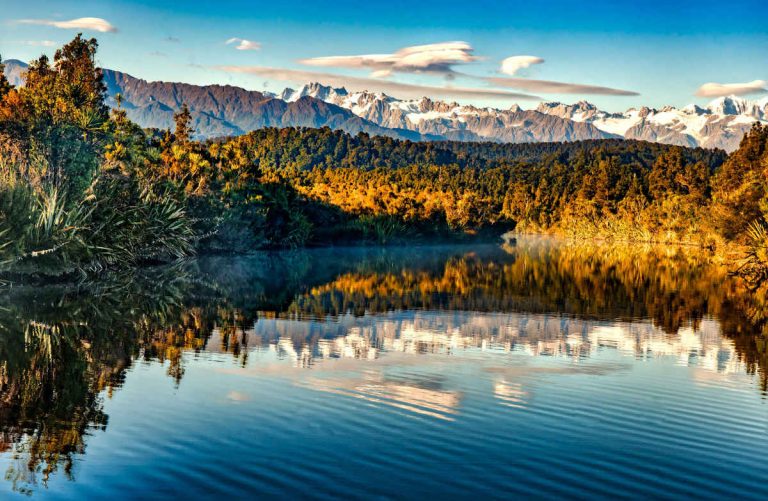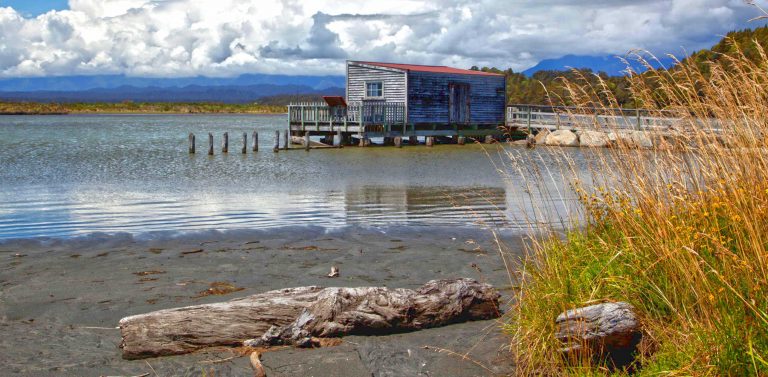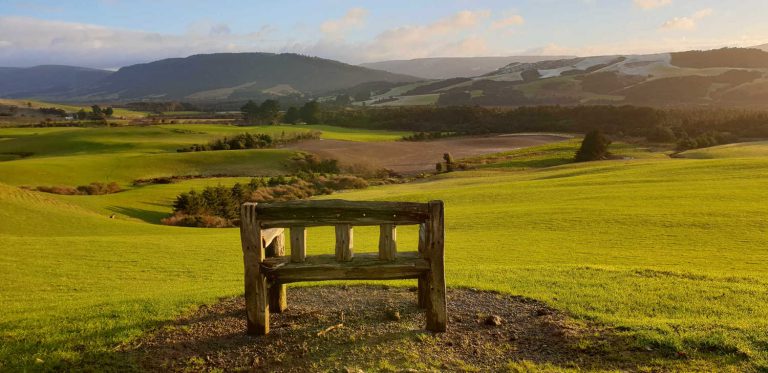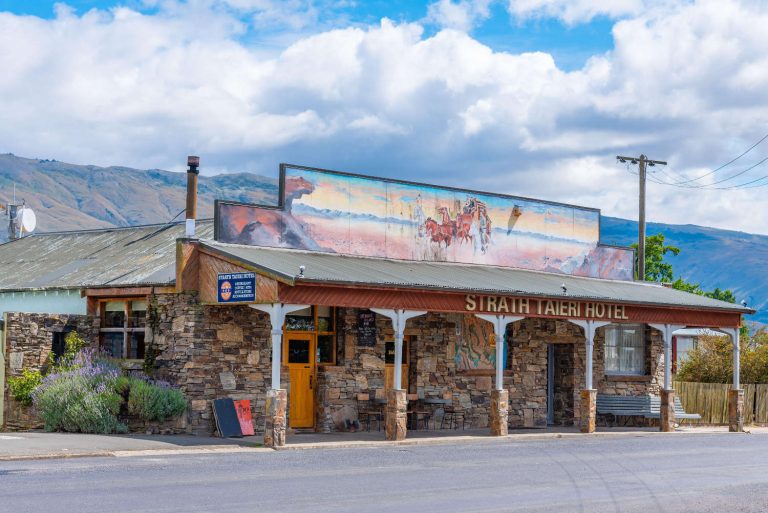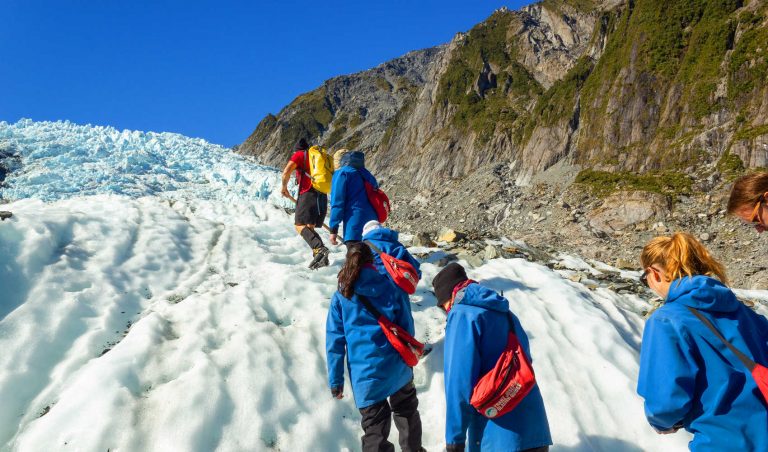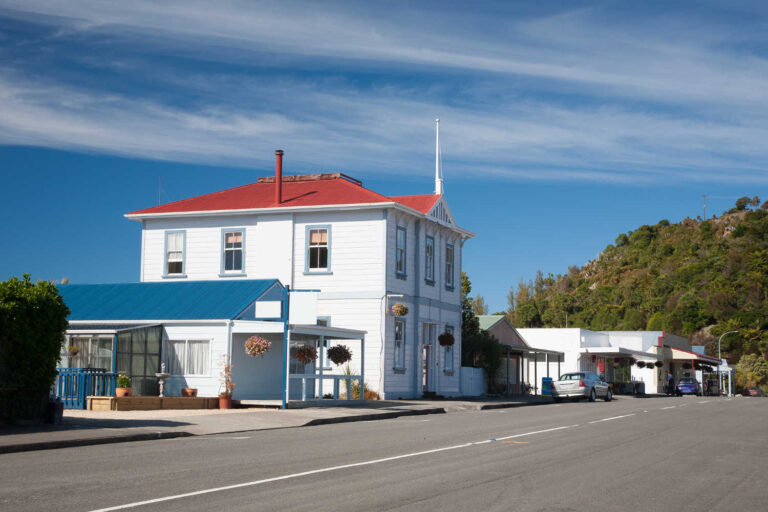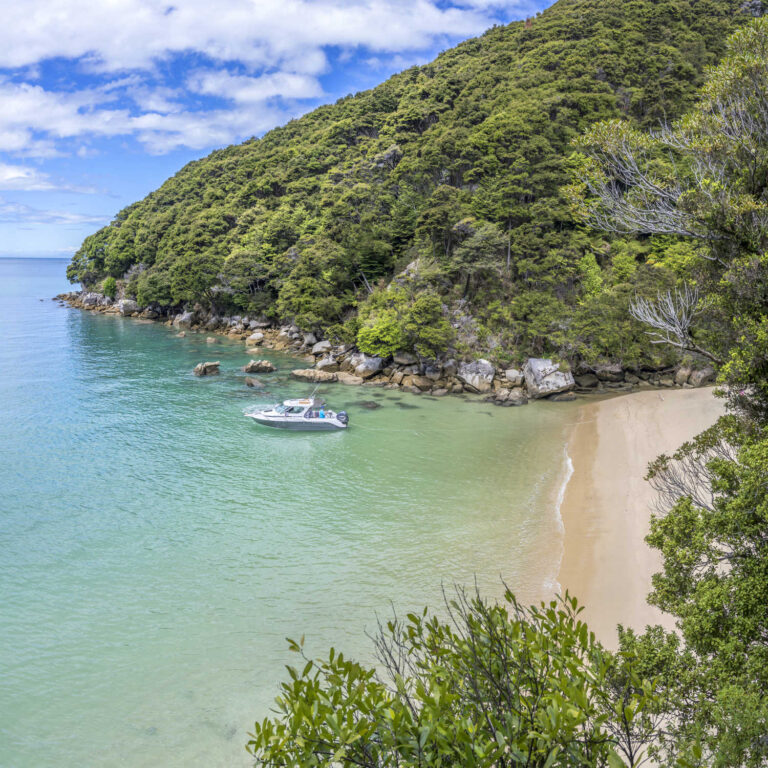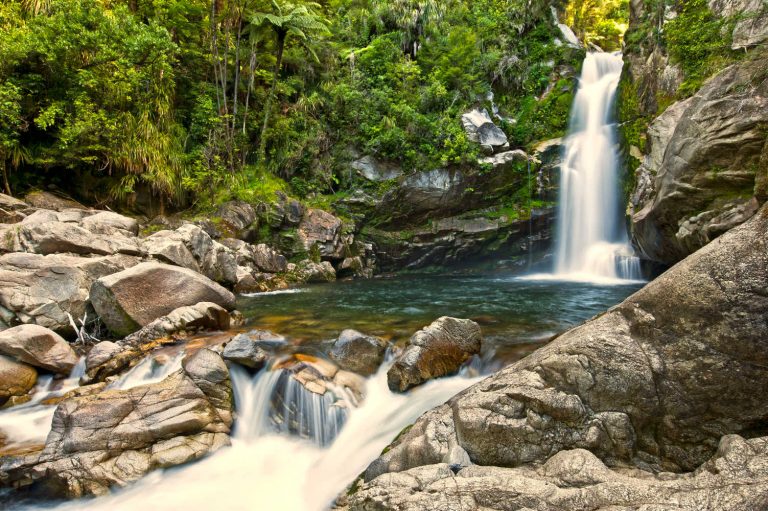7 Bucket list destinations
Pupu Springs, Nelson are a visitor firm favourite and must-go destination while Otago has the hidden gem of Sutton Salt Lake, an inland ephemeral wetland. Wetlands, the hidden gem of your New Zealand holiday… walk on a landscape between the earth, sky and water. An ancient environment where life originated and continues to be critically important.
Top 7 wetlands in the South Island
-
TE WAIKOROPUPŪ SPRINGS (PUPU) – NELSON
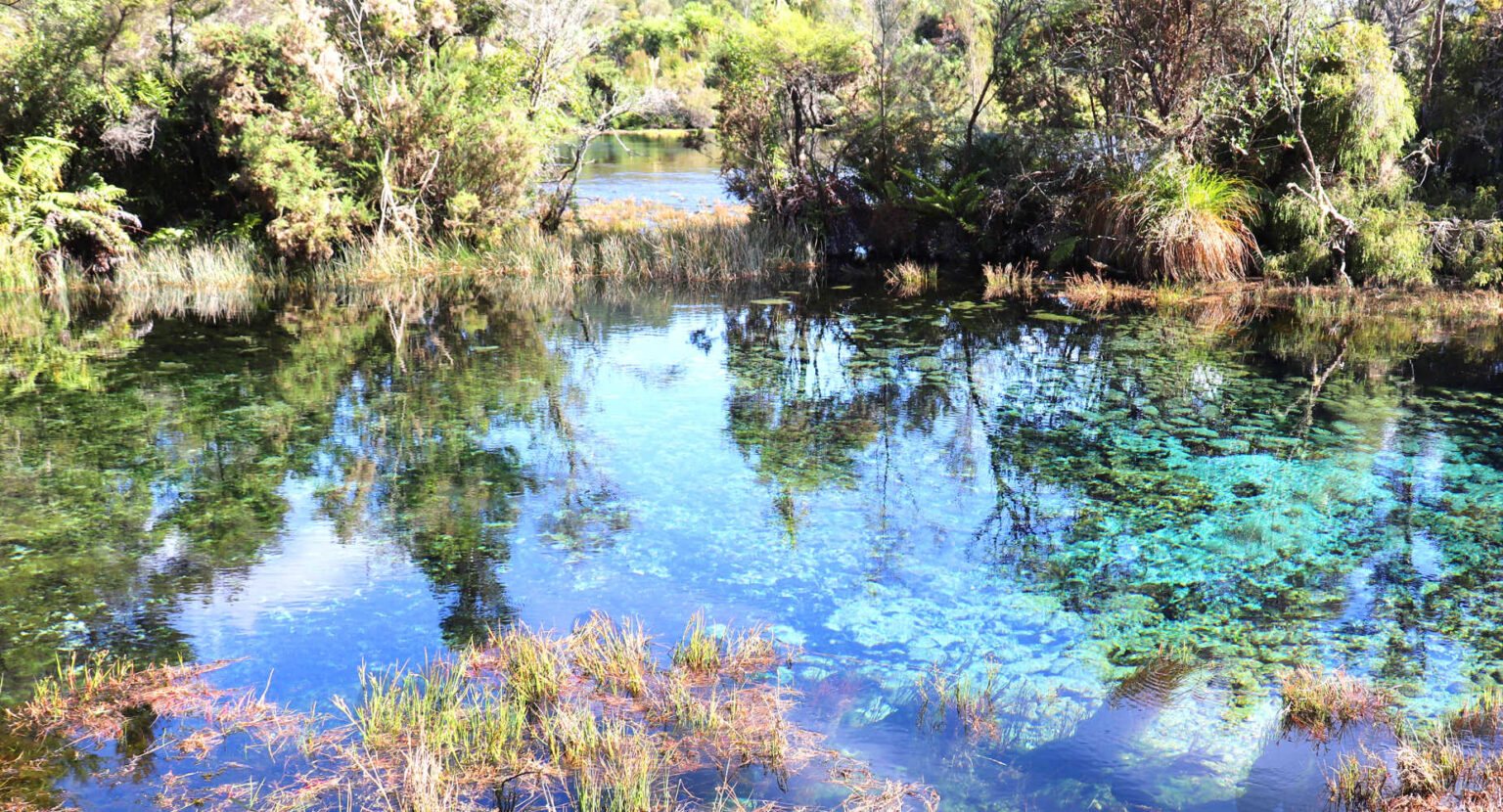
Te Waikoropupu Springs are one of the MUST GO top ten short walks in Nelson. New Zealand’s largest freshwater springs and the largest coldwater springs in the southern hemisphere. Welling water, the slow eddy of water grasses, the fat long eels and the sheer volume of the springs is breathtaking. The spring water is crystal sharp and very pure. The reserve that protects gold workings, regenerating forest and a fine patch of mature bush. A platform that sits partly over the water allows visitors to get a good view of the springs. Detailed information plaques narrate legends, scientific facts and the story of the springs. Learn more about the area … What’s so great about Takaka.
GETTING THERE
Approximately 6 km from the holiday town of Takaka, Nelson.
WHAT TO DO NEARBY
Abel Tasman National Park with its glorious gold sandy beaches, Nelson and a vibrant arts scene offers visitors plenty of reasons to relax and enjoy the good life.
-
FAREWELL SPIT – COLLINGWOOD, NELSON
Farewell Spit’s history is one of constant movement. Everything on the spit moves: the tide, sand, plants and birds. Footsteps are erased behind you. A seal resting on the sand is hidden in a matter of minutes. The quartz sands that make up the land here came from the Southern Alps. As the Alps eroded to a third of their original size sand was swept down rivers into the Tasman Sea.
Currents and winds still carry sand up the West Coast, sweeping out into a huge arch. With nature dumping 14 million cubic metres of sand here every year, in a few thousand years time the arch will extend to encircle Golden Bay and create a lagoon.
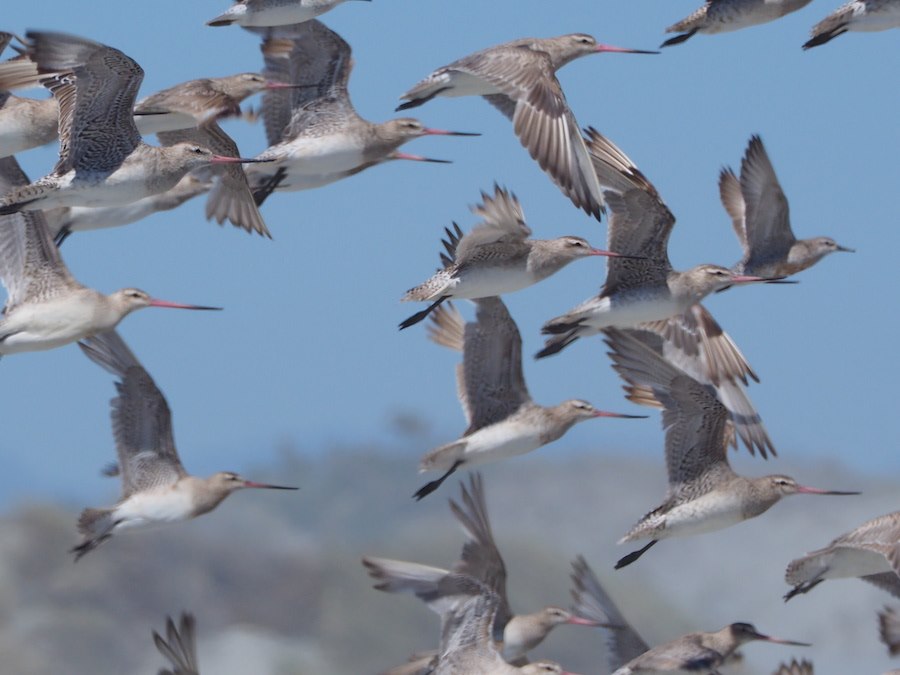
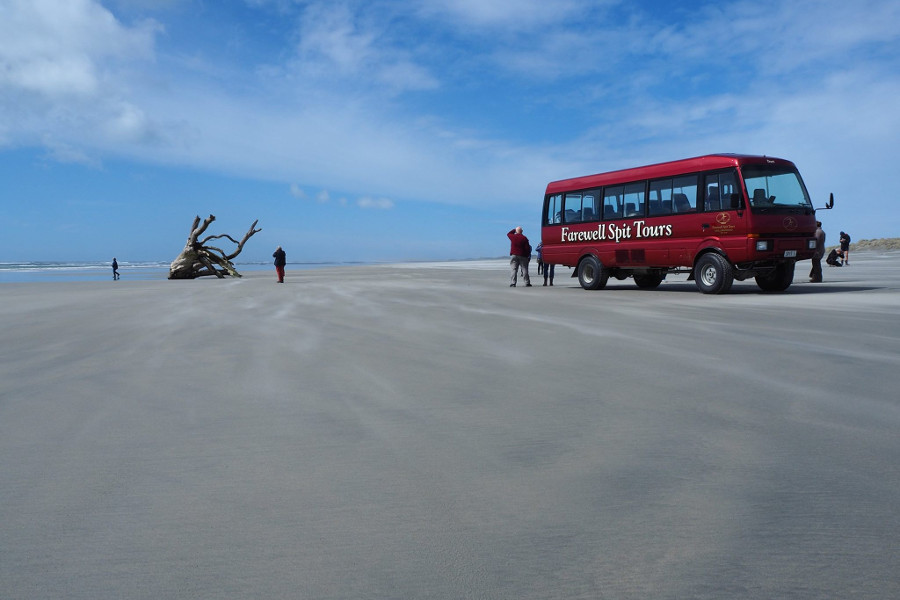
Key facts for visitors
- The Shorebird Network Site (11,388 ha) Nature Reserve is managed by DoC.
- Established as a Ramsar site on 13/08/76 on a 30km long sand spit, and intertidal area, extending at a rate of 15m annually.
- There are magnificent views of the Spit and the Cape Farewell area from Puponga Farm Park. Puponga Visitor Centre overlooks the Spit and the huge intertidal area. It has a café, souvenirs and information.
- Farewell Spit’s public access: the first 2.5 km is open to the public and offers a good impression of the Spit. Joining eco tours is the only way to get to the tip of the Spit and visit the lighthouse and gannet colony.
Source Farewell Spit | Ramsar Convention | National Wetland Trust.
WHAT TO DO NEARBY & JOIN AN ECO-TOUR check out Collingwood: things to do in a trip guide | Best Bits.
-
SHIP CREEK, HAAST – WEST COAST
Delve into the landscape of a dune lake, revel at the magnificent sight of towering kahikatea swamp trees and the dramatic scenic changes on the three walking tracks in the area.
The place to go to view dunes where the harsh coastal climate; constant wind has impacted the landscape. The path leads to the contrasting swamp and wetland areas where there magnificent kahikatea trees tower above the shaded boardwalks. Diversity, unforgettable natural beauty on the West Coast, South Island. The loop track becomes a boardwalk giving visitors an up close view of trees aged between 500 – 800 years. There are extensive information plaques describing the ecology of the area.
- Tower platforms providing sweeping views of the ocean, Jackson Head and the wetlands
- The sheer contrast packed into a 1.5 km walking track from tussock clad sand dunes to dense wetland forest.
- Great photo opportunities from platforms overlooking the dune lake
Tracks open out with stunning photo locations from platforms that overlook the dune Lake Mataketake and the sweep of the coastline south-west to Jackson Head.
INTERESTING FACT
The trees were chopped down in their thousands to make ‘butter-boxes’ for the dairy industry due to their odourless characteristics.
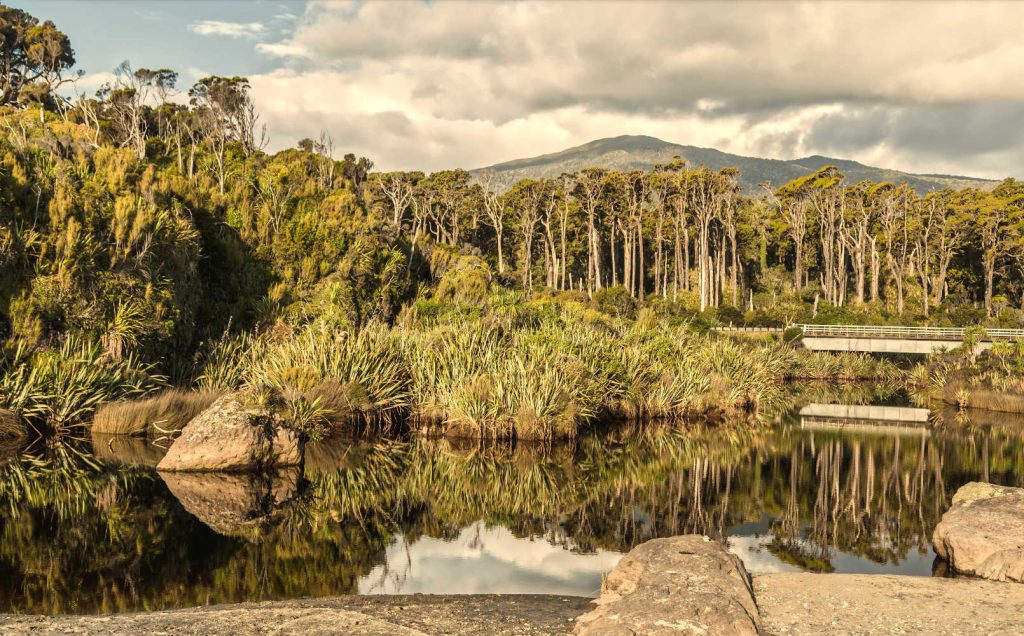
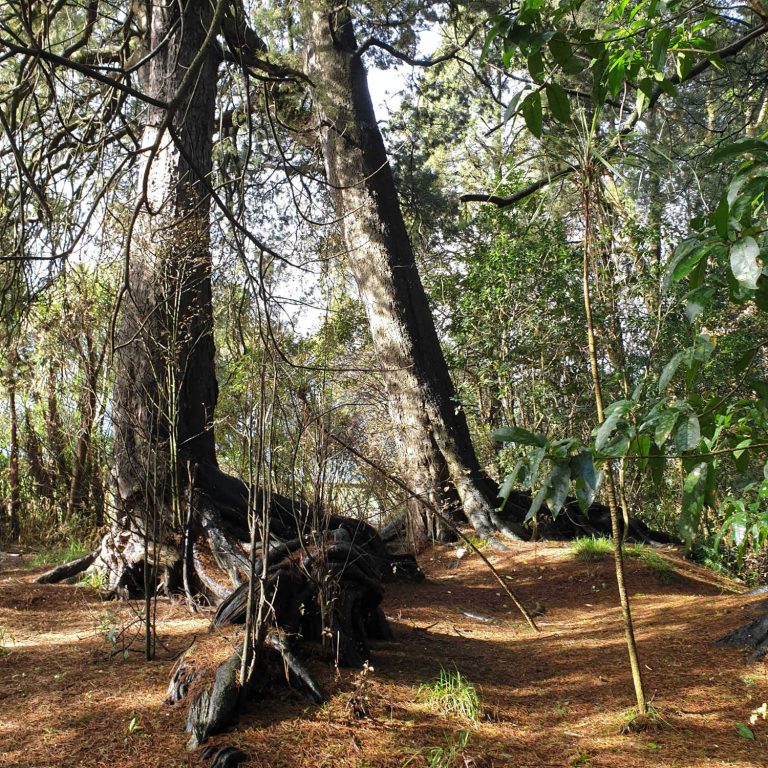
SHIP CREEK WATERWAYS are the slow eddy of tea coloured waters rich in nutrients, stained with leaf tannin and humic acids supporting an extensive environment. The kahikatea (white pine), cabbage trees, flax and kowhai flourish together with whitebait, eels and birdlife.
The kahikatea can grow to a height of 60 metres and traces its lineage over 100 million years and has the oldest fossil record for New Zealand trees, Ship Creek area – West Coast Department of Conservation manages the area.
GETTING THERE
These walks are signposted off SH6 as you head north from Haast to Lake Paringa.
- Monro Beach is near Lake Moeraki, 30 km north of Haast.
- Ship Creek Tauparikaka is 20 km north of Haast.
What to do nearby check out Glacier country guide: Franz Josef and Fox Glaciers – Best Bits.
-
SUTTON SALT LAKE – OTAGO EPHEMERAL WETLANDS
Sutton Salt Lake winter views with a great cycling and walking trail around New Zealand’s only inland salt lake. The water is half as salty as seawater. At the end of summer or extended drought the lake disappears, evaporating until the next rainfall. With no outlet, Sutton Salt Lake has concentrated salts from surrounding soils as it has repeatedly filled, evaporated and refilled.
Nestled amongst the spectacular parallel rock tor ridges of Sutton, with a backdrop of the Rock and Pillar Range, the lake (approximately 8 ha) occupies an enclosed shallow basin in the schist rock landscape.
Sutton Salt Lake winter views with a great cycling and walking trail around New Zealand’s only inland salt lake. The water is half as salty as seawater. At the end of summer or extended drought the lake disappears, evaporating until the next rainfall. With no outlet, Sutton Salt Lake has concentrated salts from surrounding soils as it has repeatedly filled, evaporated and refilled.
Nestled amongst the spectacular parallel rock tor ridges of Sutton, with a backdrop of the Rock and Pillar Range, the lake (approximately 8 ha) occupies an enclosed shallow basin in the schist rock landscape.
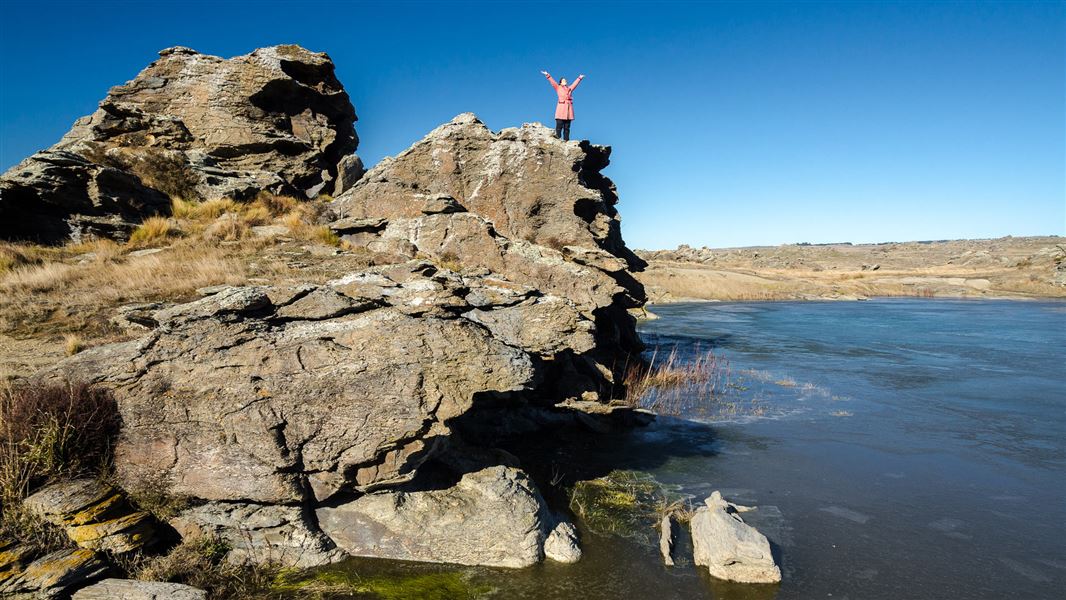
The area is a Department of Conservation scenic reserve Sutton Salt Lake Scenic Reserve – Otago. Nestled amongst the spectacular parallel rock tor ridges of Sutton, with a backdrop of the Rock and Pillar Range, the lake (approximately8 ha) occupies an enclosed shallow basin in the schist rock landscape.
Salt tolerant herbs and grasses occupy the lake margins, although in a dry summer the lake dries up completely, only to refill again during the winter. A range of water birds and waders use the lake, feeding on the tiny salt-adapted aquatic animals, including copepods, rotifers and water beetles. Check DOC resource for up to date information.
- Length: 3.5 km easy walking loop track
Getting there – Sutton Salt Lake Car Park is located approximately 9.5 km from Middlemarch.
TIP: A favourite location for stargazing with minimal light pollution
-
SINCLAIR WETLANDS – OTAGO
Sinclair wetlands located between Lake Waihola and Lake Waipori. This is New Zealand’s most inland tidal lake. It is freshwater and is over 20km’s from the coast at Taieri Mouth, with an average depth of less than a metre yet it is tidal. Between the two shallow lakes is a New Zealand treasure, a natural wetland.
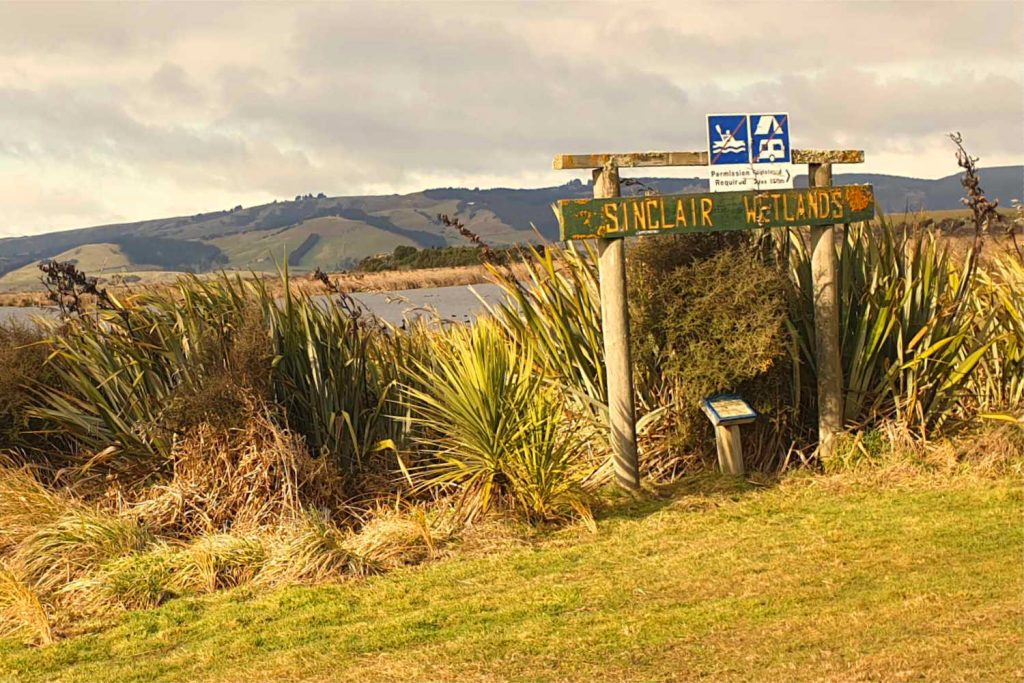
It is fascinating to think about the wetlands as the natural landscape with cows and sheeps grazing nearby on drained pasture land. Sinclair wetlands’s remaining network of river channels, natural swamps and clear waterways is over 315 hectares. The two shallow lakes drain and filter their water flows through the wetlands into the Waipori River then the larger Taieri River. Vegetated islands, meandering water channels and lagoons are a significant waterfowl habitat.
- There are well formed boardwalks, tracks and trails. An educational centre is the focus of school and visitors. There is a visitor car park with signs indicating the length of each walk. For families it is an excellent introduction to natural wetlands on the 2km trail. Check travel pack information for further information about the Wetlands
What to do nearby
Southern Scenic Road Trip: Wildlife Safari Road Trip, The Catlins – Best Bits.
-
OKARITI LAGOON – WEST COAST
Absorb the beauty of Okariti Lagoon and observe one of New Zealand’s elegant ambassadors, the white heron or kotuku who nests in the area. The lagoon is home to more than 76 species of native birds including the kōtuku/white heron and royal spoonbills. The rarest subspecies of the kiwi, the Okarito kiwi is found in the area. The area is the only identified nesting ground for the delicate white herons, or kotuku in New Zealand.
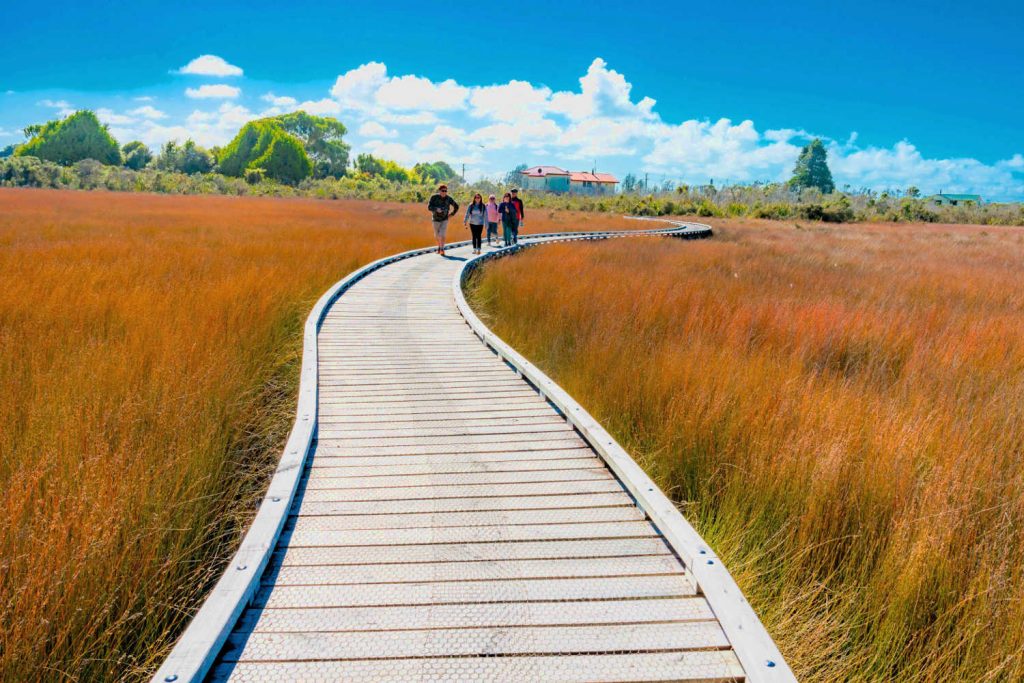
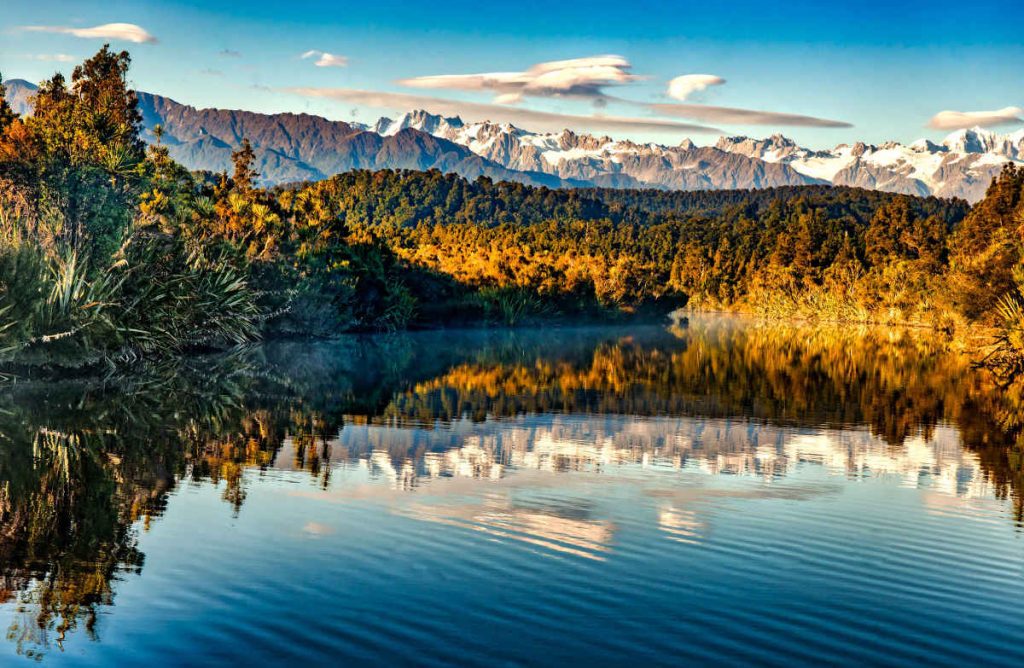
Visitors are welcome to kayak the Okarito Lagoon on guided leisurely tour with Freedom kayak rentals or camp overnight and indulge in a self-guided tour of the quiet waterways.
There is a passionate commitment to the environment and legacy of Okarito among the local residents. The white heron is the birding star of the place together with the extremely rare Okarito kiwi. The lagoon’s bird life is a major drawcard along with the sense of peace, history and sheer beauty of the landscapes.
What to do nearby, check out What’s so great about Okarito what to see and do.
-
WAITUNA WETLANDS renamed Awarua Wetland – SOUTHLAND
Discover a largely intact coastal lagoon within a coastal wetland ecosystem. Internationally recognised for its importance, Waituna wetland is a place for bird watching and trout fishing. The area is a significant habitat for birds, fish and eels. Unusually sub-alpine plants are only found in this location, such as the cushion plant Donatia which normally grows in sub-alpine areas. Seventy six species of birds have been recorded here, including international migratory waders.
WAITUNA RAMSAR SITE
Waituna is a Ramsar site so is an internationally recognised place of importance for birdlife. Check out Whakamana te Waituna, passionate locals ensuring the well being of the fragile landscapeю
Waituna Lagoon tracks: Awarua Wetlands, Southland region are managed by Department of Conservation. You can stroll the boardwalk, walk the loop track through wetland tarns or walk along the spectacular white quartz beach to the outlet of Waituna Lagoon. There are a number of tracks and trails from several minutes on a boardwalk to 2 hour trails.
Waituna Lagoon (also known as Lake Waituna) and wetlands was one of the first sites in the world to be named “a wetland of international significance” under the RAMSAR Convention, an intergovernmental treaty that was signed in Ramsar, Iran in 1971. Check DOC resource for up to date information.
GETTING THERE
You can access the wetland from Kapuka South Road, which is signposted on State Highway 92 approximately five kilometres past Gorge Road township.
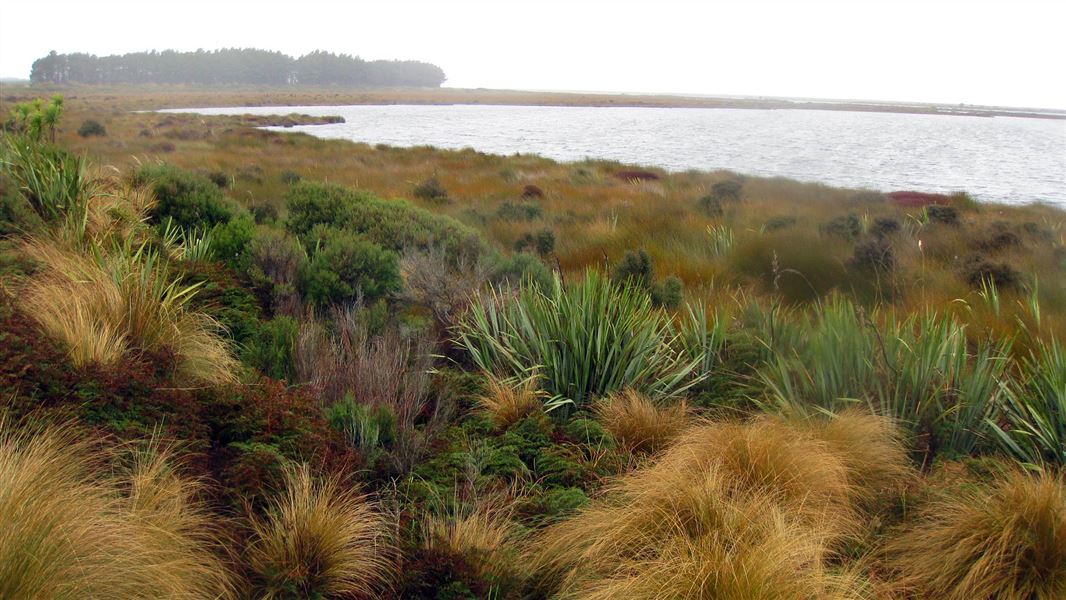
SOUTHLAND COMMUNITY NURSERY – VOLUNTEER EFFORTS
The Southland Community Nursery is available for local people and groups to grow locally sourced native plants best suited for Southland conditions. The nursery supplies a range of native seedlings, potting mix, pots, seed mix and facilities, you supply the labour. It’s a great way for you to produce hundreds of native plants for restoration schemes at no cost excepting your own time. Find out more about the nursery and how you can get involved.
We also sell locally sourced and grown plants for $5 a plant in PB3 size pots. Buying plants from the Community Nursery supports our Charitable Trust.
Read the Project Document for the Community Nursery and Education Centre.
For more information about wetlands check out Wetland introduction to New Zealand’s forgotten waterways.
Travel pack information
BEST BITS TRAVEL GUIDE
Best Bits travel guide is published by nzjane.com. Owned and managed by PacificJane Ltd.
Our editors independently visit tour operators, purchase tickets, pay for accommodation, and rate products and places. We are not paid to go on a tour or visit a place. We only make money if you decide to purchase a product through our website links. We promise to never accept free products from manufacturers in return for boosting their products. Read more about our affiliate programme in the terms and conditions HERE.


